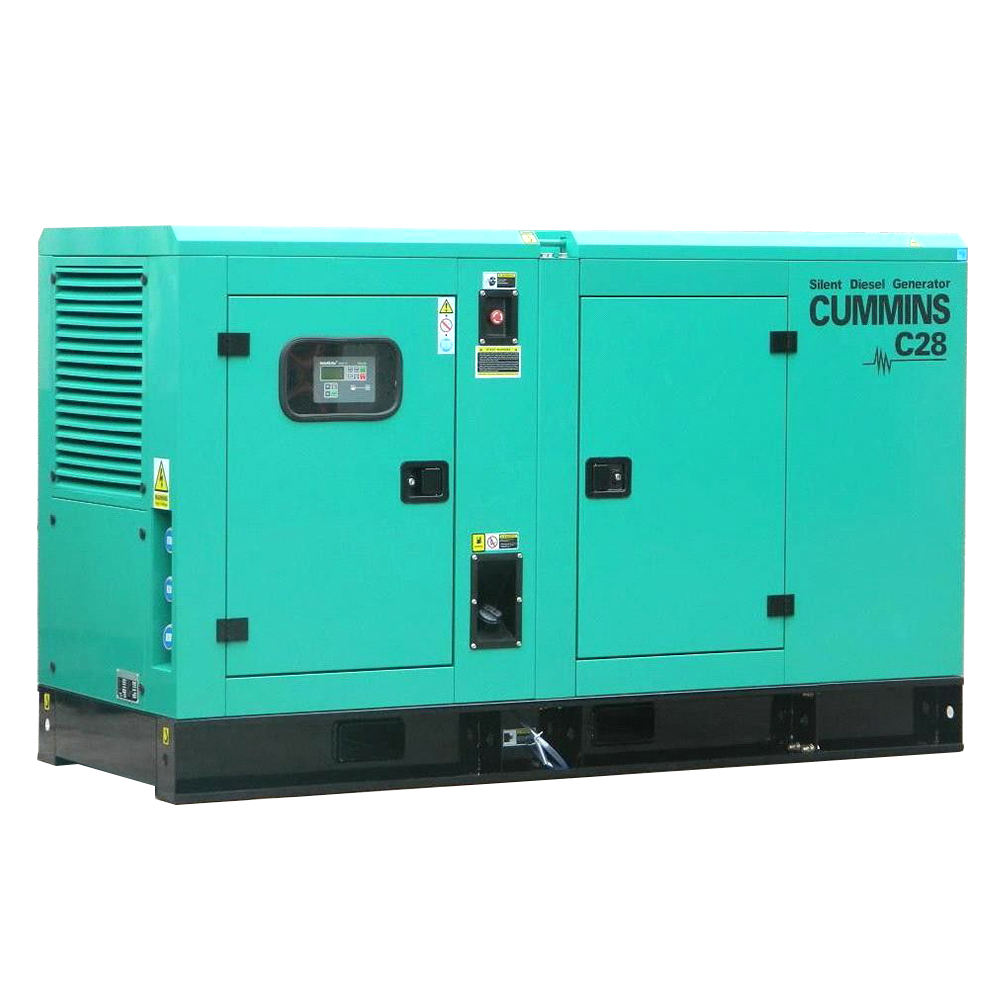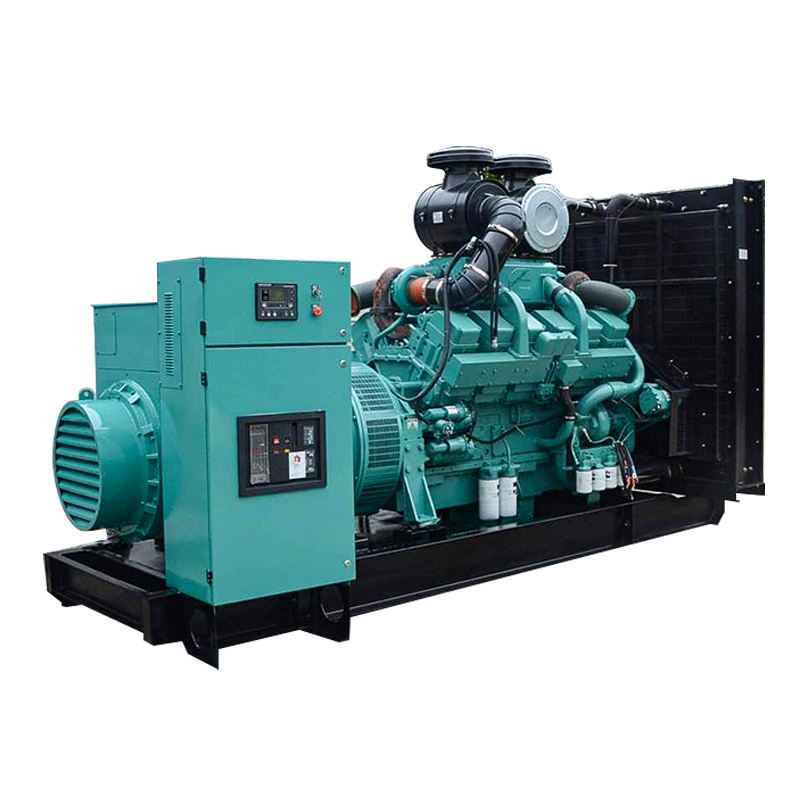In today's rapidly evolving energy landscape, the demand for reliable, efficient, and environmentally conscious power generation solutions has never been higher. As we look towards 2025, businesses, industries, and critical infrastructure are increasingly seeking alternatives to traditional power sources, or reliable backup systems that offer superior performance and lower operational costs. This growing need is driving innovation in the field of generator technology, particularly within the natural gas sector. Natural gas generator sets have long been a cornerstone of distributed power, offering a cleaner-burning fuel source compared to diesel. However, the "next-generation" sets slated for 2025 represent a significant leap forward, promising a combination of power and efficiency that was previously challenging to achieve simultaneously. Frankly speaking, these new units are designed not just to provide electricity, but to optimize every aspect of power generation, from fuel consumption to emission control and overall operational intelligence. They are poised to become a critical component for businesses aiming for both operational resilience and sustainability goals in the near future.
Driving Efficiency in Next-Generation Natural Gas Power
The pursuit of greater efficiency is a core focus for the development of **Next-Generation Natural Gas Generator Sets for 2025**. Why is efficiency so paramount? Primarily, it directly impacts operational expenditure through reduced fuel consumption. A more efficient generator set uses less natural gas to produce the same amount of power, leading to substantial savings over its lifespan, especially for continuous or heavy-use applications. But efficiency goes beyond just fuel; it also encompasses thermal efficiency, reducing heat waste, and mechanical efficiency, minimizing energy losses within the engine and alternator components. These next-gen units are incorporating advanced combustion technologies, such as lean-burn systems and sophisticated air-fuel ratio controls, which optimize the burning process for maximum energy extraction and lower unburned hydrocarbons. Interestingly enough, many experts agree that the incremental gains made across multiple subsystems – from optimized turbocharging and intercooling to reduced friction within engine components – collectively contribute to significant overall efficiency improvements. This holistic approach is key to unlocking the full potential of natural gas as a primary or backup power source, making it an even more attractive option for users focused on cost-effectiveness and resource management as we approach 2025.
Advanced Combustion Techniques for Improved Fuel Economy
Delving deeper into the efficiency gains, it's worth noting the critical role of advanced combustion techniques in these 2025 generator sets. Traditional rich-burn engines often sacrifice some fuel efficiency for simpler emission control, while previous lean-burn systems sometimes struggled with stability across varying loads. The next-generation designs are overcoming these hurdles through sophisticated electronic controls and refined chamber designs. We're talking about systems that can precisely manage the air-fuel mixture in real-time, adapting to changing load demands without compromising combustion quality. Technologies like pre-chamber ignition or advanced stratified charge combustion are being explored and implemented to ensure more complete fuel burn, extracting more energy from every cubic foot of natural gas. This not only boosts fuel economy significantly but also contributes to lower emissions, hitting two critical targets simultaneously. In my experience, the difference in fuel consumption between a standard natural gas genset and one utilizing these cutting-edge combustion methods can be quite dramatic, translating directly into lower operating costs for the end-user over the long term. Maximizing efficiency in natural gas power generation is not just an engineering goal; it's a fundamental economic advantage.
Unpacking the Power Advancements for 2025 Generator Sets
Beyond efficiency, the "power" aspect of **Next-Generation Natural Gas Generator Sets for 2025** is equally compelling. While natural gas has historically been associated with slightly lower power density compared to diesel in certain applications, the upcoming generation is closing this gap and even exceeding previous benchmarks. This is achieved through several key advancements. Engine designs are becoming more robust, capable of handling higher pressures and temperatures associated with optimized combustion. Turbocharging technology is playing a significant role, allowing smaller engines to produce more power by forcing more air into the cylinders. Furthermore, material science improvements mean critical components can withstand the stresses of higher power output for extended periods, enhancing both performance and reliability. Have you ever wondered how generators can become more powerful without necessarily becoming much larger? It's often down to these intricate engineering improvements under the hood. The goal is to offer power output comparable to or even exceeding diesel units in similar footprints, providing users with greater flexibility in deployment and site selection. This blend of increased power and improved efficiency is what truly defines the "next-generation" capability.
Enhanced Reliability and Durability for Continuous Operation
Reliability is non-negotiable when it comes to power generation, whether for prime power or critical backup. For the **Next-Generation Natural Gas Generator Sets for 2025**, enhanced reliability and durability are built-in features, not just add-ons. This comes from a combination of factors, including the inherent clean-burning nature of natural gas, which leads to less engine wear compared to diesel, and significant engineering efforts focused on system longevity. Manufacturers are utilizing advanced diagnostics and predictive maintenance capabilities, often integrated into the generator's control system, allowing for early detection of potential issues before they lead to failure. Component design is being optimized using advanced simulation techniques, ensuring parts can withstand rigorous operational cycles. Furthermore, improved lubrication and cooling systems are standard, managing thermal stresses more effectively. To be honest, a reliable generator isn't just about preventing breakdowns; it's about ensuring consistent, stable power quality, which is vital for sensitive equipment and processes. These 2025 units are engineered for longer service intervals and reduced total cost of ownership, making them a robust choice for demanding applications that require continuous or readily available power.
Integration with Smart Grids and Digital Controls
A defining characteristic of the **Next-Generation Natural Gas Generator Sets for 2025** is their seamless integration with modern control systems and smart grid technologies. Gone are the days of standalone, isolated generator sets. The future is connected. These new units come equipped with sophisticated digital controllers capable of intricate load management, paralleling with other generators or the utility grid, and remote monitoring and control. This level of connectivity allows for optimized operation, such as peak shaving, load shedding, or participating in demand response programs, which can generate revenue or reduce energy costs. Remote diagnostics enable technicians to monitor performance, predict maintenance needs, and even troubleshoot issues without being on-site, drastically reducing downtime and service costs. The ability to communicate with building management systems or microgrid controllers means these generators can be part of a larger, more resilient, and intelligent energy ecosystem. This focus on digital integration provides users with unprecedented visibility and control over their power generation assets, leading to more efficient and reliable operation.
Lowering Operational Costs Through Intelligent Management
Beyond just fuel efficiency, lowering overall operational costs is a significant benefit derived from the intelligent management capabilities of these 2025 generator sets. By integrating with digital controls and monitoring systems, users can optimize their generator's run time based on real-time energy prices, utility tariffs, and operational needs. For example, a system could be programmed to run the generator during peak utility rate hours (peak shaving), significantly reducing costs compared to drawing from the grid. Predictive maintenance based on actual usage data minimizes unexpected failures and costly emergency repairs, allowing maintenance schedules to be optimized for efficiency. Furthermore, remote monitoring reduces the need for frequent physical inspections, saving on labor costs. It's worth noting that the data collected by these intelligent systems provides valuable insights into performance, allowing for continuous optimization and ensuring the generator operates at peak efficiency throughout its lifecycle. This focus on reducing total cost of ownership makes high-efficiency natural gas power solutions a compelling investment.
Applications and Suitability for Various Industries
The versatility of **Next-Generation Natural Gas Generator Sets for 2025** makes them suitable for a wide range of applications across numerous industries. Their combination of power, efficiency, and reduced emissions makes them ideal for prime power generation in locations where grid power is unreliable or unavailable, such as remote industrial sites or developing regions. They are also becoming the preferred choice for critical backup power in sectors like healthcare, data centers, telecommunications, and finance, where uninterrupted power is essential for safety and operations. Commercial buildings, manufacturing plants, and educational institutions can utilize them for standby power, peak shaving, or even combined heat and power (CHP) applications to maximize energy utilization. Frankly speaking, almost any operation that requires reliable, on-site power can benefit from the advancements in these natural gas units. Their relatively lower emissions compared to diesel, especially in urban or environmentally sensitive areas, adds another layer of suitability for a broader set of potential users. The evolving landscape of sustainable energy generation 2025 hinges significantly on cleaner distributed power sources like advanced natural gas gensets.
Choosing the Right Natural Gas Generator Set for Your Needs
Selecting the appropriate natural gas generator set for your specific application requires careful consideration. It's not simply about choosing a power rating. Factors such as continuous vs. standby power needs, load profile variations, site-specific considerations (altitude, temperature), noise restrictions, and emissions regulations all play a crucial role. For 2025 and beyond, you'll also want to consider the level of digital integration and control capabilities offered, as this will impact long-term operational efficiency and management ease. Consider whether the generator can be easily paralleled if future expansion is anticipated or if integration with a microgrid or existing energy system is necessary. Furthermore, evaluate the support and service available for the unit; reliable maintenance is key to maximizing uptime and lifespan. Consulting with experts who understand advanced natural gas generator technology is highly recommended to ensure you select a system that not only meets your current power requirements but also provides long-term value and contributes to your operational and sustainability goals.
The Future Outlook for Natural Gas Gensets in 2025
Looking ahead to 2025 and beyond, the future for natural gas generator sets, especially these next-generation models, appears bright. They offer a compelling balance between performance, cost-effectiveness, and environmental considerations compared to other fossil fuel options. While the transition to fully renewable energy sources continues, natural gas gensets are expected to play a vital role as reliable bridge technology and essential backup power, supporting grid stability as renewables are integrated. The ongoing innovation in efficiency, reduced emissions, and digital connectivity ensures their continued relevance. Manufacturers are investing heavily in research and development to push these boundaries further, exploring areas like even lower NOx emissions and greater fuel flexibility. As grid reliability faces increasing challenges from extreme weather events and growing demand, the role of dependable, on-site power solutions like advanced natural gas generator technology becomes ever more critical. They offer a pathway to energy resilience for businesses and communities worldwide.
In conclusion, the **Next-Generation Natural Gas Generator Sets for 2025: Power and Efficiency Combined** represent a significant advancement in the field of distributed power. They address the modern needs for both robust performance and optimized resource utilization. By incorporating cutting-edge technologies in combustion, controls, and materials, these units deliver higher efficiency, greater power output, enhanced reliability, and seamless digital integration. Whether for prime power, standby applications, or participation in intelligent energy systems, they offer compelling benefits for a wide range of industries. As you plan your power infrastructure for the coming years, evaluating these advanced natural gas solutions is a crucial step towards securing reliable, cost-effective, and more sustainable energy. The power and efficiency combined in these 2025 models provide a powerful solution to the challenges of today's energy demands. What critical power needs are you anticipating in the coming years? Considering these next-generation solutions might offer the answer you're looking for.
For more detailed information, please visit our official website: Natural Gas Generator Sets





